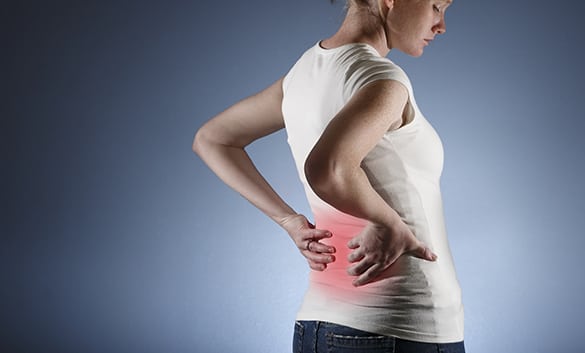
With Los Angeles Pain Associates, find relief from Tailbone Pain and return to the activities you enjoy.
Coccydynia is a medical term for pain in the coccyx or tailbone. It is sometimes also called coccygeal pain, coccalgia, or coccygodynia. Treatments can include:
- A special cushion
- Activity modifications
- Physical therapy
- Surgery
CONTACT US TODAY
Symptoms
Pain and tenderness in the area just above the buttocks are the chief symptoms of coccydynia. The pain can be dull or sharp. It is often worse when the patient is sitting or standing for long periods, using the toilet, or getting up out of a chair. If the pain is severe enough, it can interfere with commonplace activities like bending over or sleeping. Some patients also develop sciatica or pain in their back, hips and/or buttocks.
The patient should call the doctor if any of the following are true:
- The pain is severe
- The pain doesn’t start to improve after a few weeks of home remedies
- The pain is accompanied by a high fever, bleeding, or pain in another part of the body


Causes
In many cases, coccydynia is idiopathic or has no identifiable cause. Coccydynia is also often classified as traumatic or non-traumatic. Traumatic coccydynia is caused by injury or accident; falls are a particularly common cause. On rare occasions, coccydynia can be caused by a tumor near the coccyx.
Treatments
A coccyx cushion will probably be one of the first treatments that a doctor recommends that a patient try. It is designed to provide extra support and relieve pressure on the coccyx when the patient is sitting. A coccyx cushion has a cut-out in the back and is made of heavy-duty foam-form or gel. It is often sold in pharmacies or surgical supply stores.
In addition to the coccyx cushion, the doctor may recommend other self-help measures that include the following:
- Not sitting for long periods and taking periodic breaks from sitting
- Avoiding tight pants or other garments that might pressure on the tailbone
- Using laxatives if going to the bathroom makes the pain worse
- Applying cold packs or heating pads to the tailbone
- Taking over the counter pain medications
Non-steroidal anti-inflammatory drugs (NSAIDs) like ibuprofen can be used if the pain isn’t too severe. Such drugs reduce inflammation and ease pain.
If over-the-counter drugs don’t work or the pain is more severe, the doctor may prescribe stronger pain medications. One possibility is a drug called tramadol. It is both addictive and can cause side-effects, so the patient will only be able to take it for a short time.
If oral medications don’t work, the doctor may recommend injections. The doctor may use corticosteroids or nerve blocks, both of which can relieve the pain for weeks or months at a time. The doctor will administer the injection around the tailbone.
The doctor may also recommend physical therapy. The therapist can provide treatments like massages to ease the pain. They can also provide advice on how to reduce pressure on the tailbone by improving their posture or movement. The therapist can also teach the patient exercises to help relax the muscles around the coccyx.
Surgery is the last resort if all of the other treatments have failed. The surgeon may remove part or all of the patient’s tailbone in a procedure called a coccygectomy.

